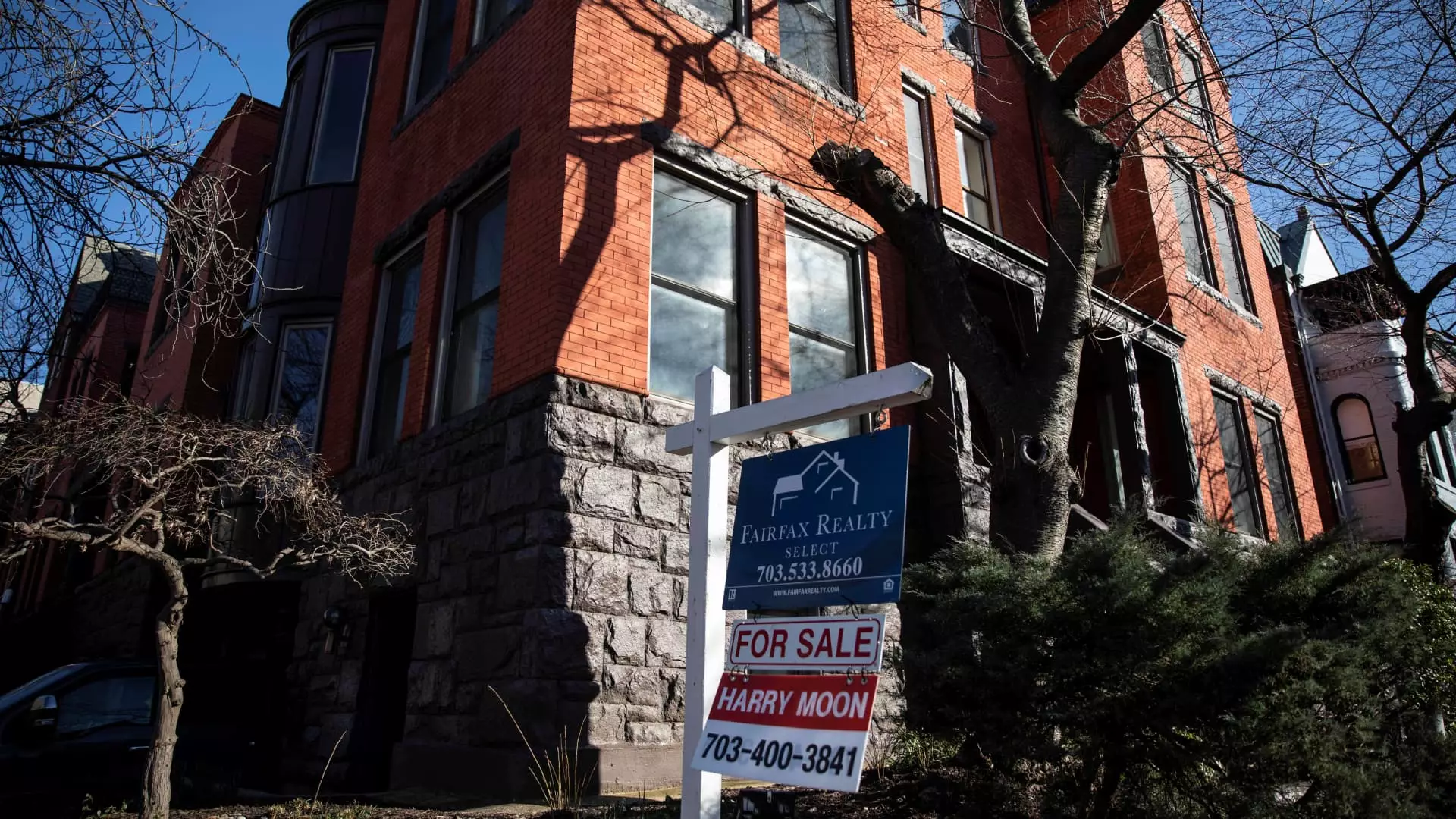At first glance, a staggering 56% increase in housing inventory in the Washington, D.C. metropolitan area could be perceived as a silver lining for those hoping to buy a home in the capital’s notoriously competitive market. However, dive deeper into the implications of such a dramatic uptick, and it paints a more troubling picture of economic uncertainty and consumer hesitance. The increase in active listings—prompted by multiple factors including federal employment shifts and a slowdown in buyer activity—reveals a nuanced landscape that many prospective buyers and investors may overlook.
The major driving force behind this unprecedented surge in listings can’t simply be attributed to an uptick in sellers eager to cash in on their investments. Instead, it signals a growing imbalance, a market grappling with underlying instability. This trend not only complicates the future for many buyers but also casts a shadow over economic recovery notions. It suggests that the allure of D.C. real estate is waning and that a toxic cocktail of factors, including job cuts in the federal sector, is causing more sellers than buyers to react.
Economic Ripples from Federal Employment Changes
Danielle Hale, chief economist for Realtor.com, aptly notes that the “adjustment period following federal layoffs and funding cuts” is likely influencing home searches across the D.C.-area. With the federal sector employing a significant number of residents, any disruptions here consequently rattle confidence in the housing market. The sudden stoppage of home searches—whether due to financial uncertainty or cautious optimism—indicates a market at risk. Who can blame canny buyers for taking pause when their job security becomes tenuous?
This is not just a D.C.-specific concern; other markets with heavy federal employment can expect similar behavior in the coming months. A decline in opportunities or job stability prompts a recalibration of priorities for potential home buyers. Questions swirl: Are they prepared to invest in a home when lingering uncertainty in the federal job market looms overhead? The answer, for many, leans towards caution.
New Constructions: A Double-Edged Sword
Another contributing factor to the burgeoning housing inventory is the influx of new condominiums and townhomes. While the intention behind new constructions is often to meet demand, the current economic climate raises concerns about whether there will be sufficient buyers to occupy these developments. The D.C. area has seen a surge in construction, aligning with a broader shift towards more condominiums—an attempt to cater to changing demographics and housing needs. But with wages stagnant for many Americans, even the prospect of moving to a chic new condo may become a distant dream for the average worker.
The notion of progress in the Washington area is undercut by the stark reality that new units may flood the market without sufficient buyers. The quickening pace of new listings seems undermined by a sluggish response from buyers, creating an austere contradiction—a cavalcade of homes waiting for occupants, as potential buyers are hindered by uncertain financial futures amid declining job prospects.
Pricing: The Ironic Downward Pressure
At the same time, the pangs of rising inventory and the sluggish pace of buyer activity are impacting prices in D.C. The decrease in the median list price, down 1.6% year-over-year, functions as a paradox in the housing market narrative. Merging lower prices with higher inventory creates what economists deem a “buyer’s market”—yet this scenario does not automatically translate into a boom for buyers.
As the number of listings increases while prices drop, a potentially damaging cycle begins to emerge: buyers might hold out, hoping to snag even better deals, further eroding their urgency to purchase. Meanwhile, sellers are trapped in a complicated web of market conditions; their homes may take longer to sell and fetch lower prices than anticipated.
The Crossroads: Uncertainty Looms Ahead
As we analyze the realities of D.C.’s housing market, it becomes eerily clear that the future holds ambiguity. The sharp increase in inventory reflects more than just a seasonal adjustment; it signals a market in transition, one with numerous critical factors at play. The convergence of declining federal stability, ceaseless new constructions, and shifting buyer confidence suggests an impending crossroads for buyers and sellers alike.
This increasing inventory might initially glimpse as advantageous, yet it reveals a troubling undertone—that the housing market is grappling with uncertainty and change. As a center-right observer, it becomes crucial to advocate for policies that bolster economic stability and empower consumers to reinvigorate this struggling sector. After all, a robust housing market should reflect optimism, not anxiety about the future.

